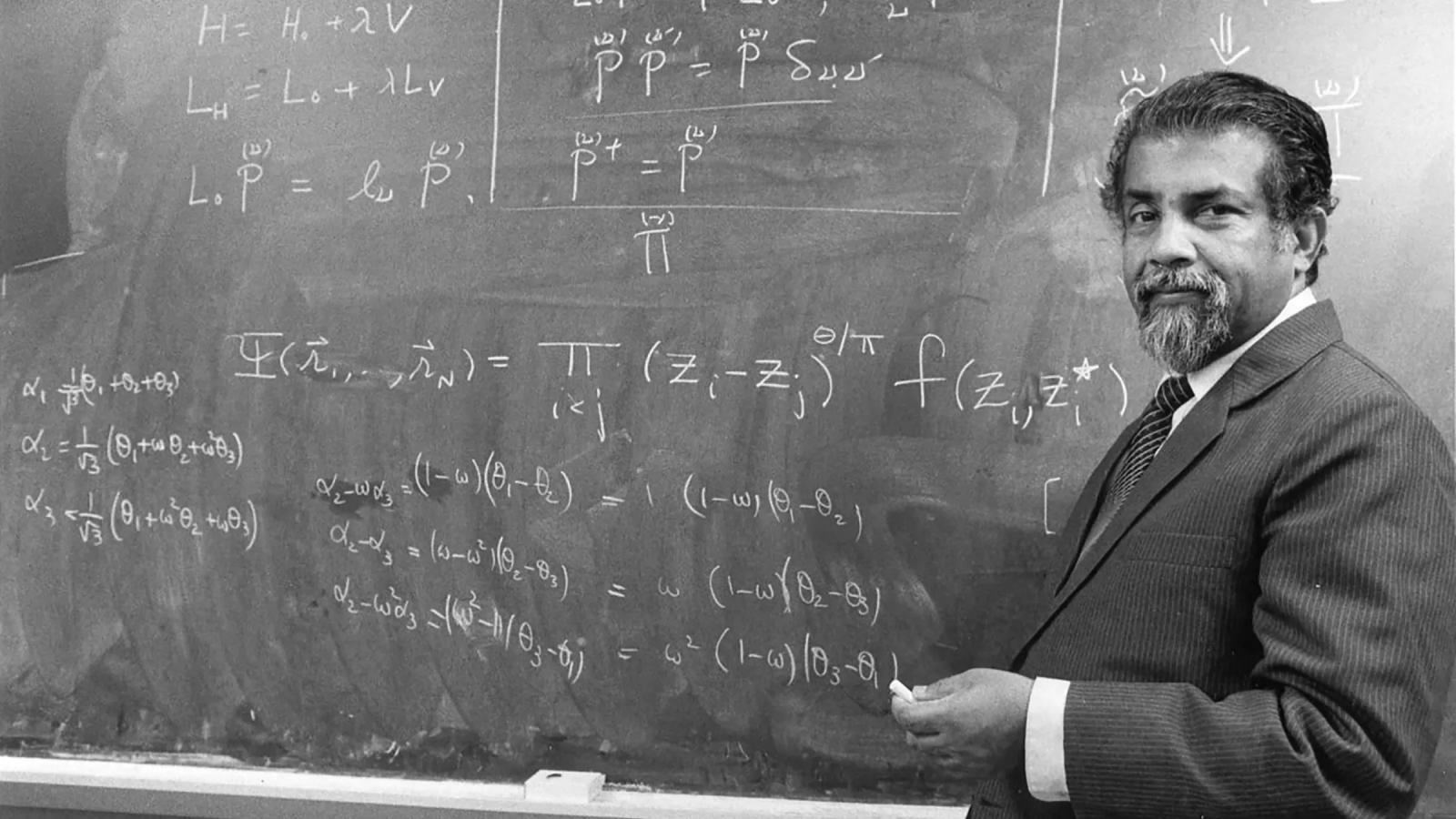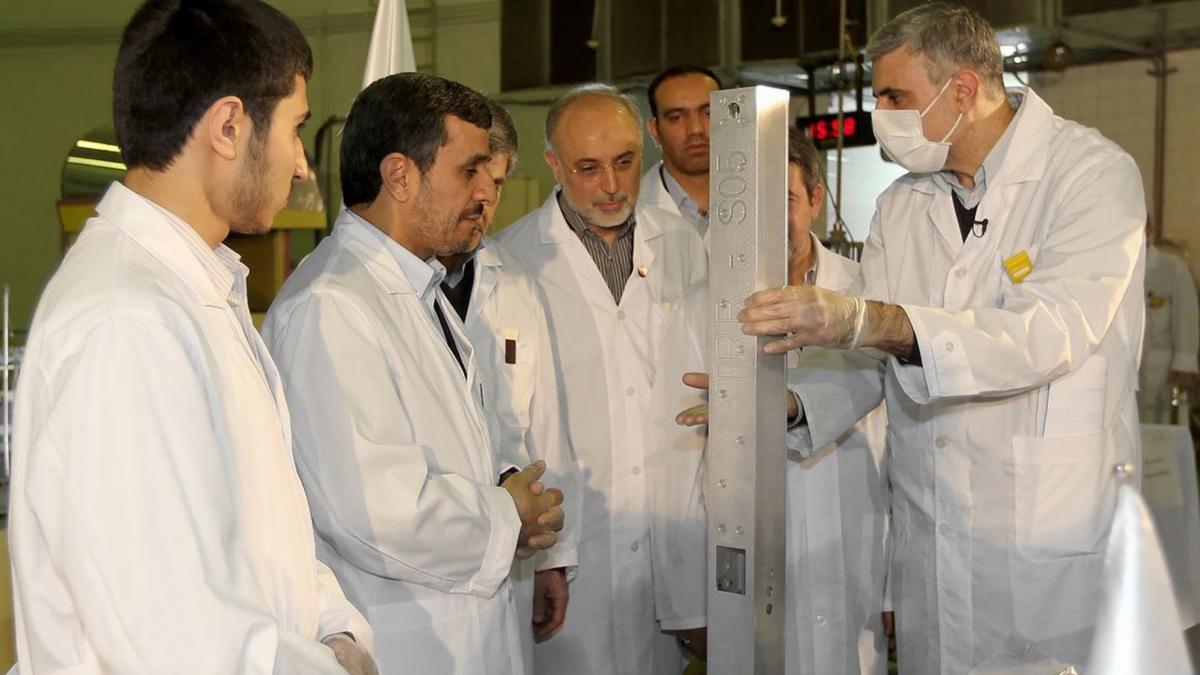UT Austin Mourns Passing of George Sudarshan, Titan of 20th Century Physics
Mark Airhart ("The University of Texas at Austin")

E.C George Sudarshan made many contributions to theoretical physics, including the foundations of quantum optics and the proposal of new particles called tachyons.
World-renowned physicist E.C. George Sudarshan died of natural causes this week at the age of 86. A professor of physics at The University of Texas at Austin from 1969 to 2016, he made many important contributions to theoretical physics.
Ennackal Chandy George Sudarshan was born in Kottayam, Kerala, India on Sep. 16, 1931. He received his Ph.D. degree from the University of Rochester in 1958. He then moved to Harvard University to work with Julian Schwinger as a postdoctoral fellow. After serving on the faculties of the University of Rochester and Syracuse University, he settled at UT Austin in 1969.
Sudarshan received many honors and awards, including the Padma Bhushan (Order of the Lotus) presented by the president of India (1974), the Bose Medal from the Indian National Science Academy (1977) and the Dirac Medal (2010).
Working with his Ph.D. advisor Robert Marshak, Sudarshan created the V-A theory of the weak force, a discovery that was crucial to the unification of the weak and electromagnetic interactions by Steven Weinberg, Abdus Salam and Sheldon Glashow, which in turn led to the 1979 Nobel Prize in Physics.
Along with Roy Glauber, Sudarshan developed a quantum mechanical description of light that would become the foundation of a new field: quantum optics. Glauber went on to share the 2005 Nobel Prize in Physics for that work. (SEED magazine recounted the controversy surrounding that year's Nobel in Physics.)
Sudarshan and his graduate student V. K. Deshpande first proposed the existence of particles called tachyons that would violate Einstein's theory of relativity by travelling faster than the speed of light. They would also have the bizarre consequence of allowing signals to be received by an observer before it was actually sent, violating the principle of causality. So far, no experimental evidence has been found to support their existence.
Even during his tenure at UT Austin, he continued to contribute to research and education in his home country of India, serving as a senior professor at the Center for Theoretical Studies at the Indian Institute of Sciences (1971-1991) and director of the Institute of Mathematical Sciences in Chennai, India (1984-1991).
Read more about his life on the Beck Funeral Home site.
- Se connecter ou s'inscrire pour publier un commentaire
- 9 vues
Connexion utilisateur
Dans la même rubrique
URGéo-URBATER, Université d'État d'Haïti, Agence Kannh et le bureau d'étude et de conseils TCGNRG
22/10/2025 - 19:03
16/09/2025 - 15:48
05/09/2025 - 16:37
Tom Kerkour
23/06/2025 - 12:58
Commentaires récents
Un millier de personnes se mobilisent pour défendre et diffuser une langue régionale : l'occitan
BANDE DE VOLEURS !
Albè
25/10/2025 - 19:49
"Krik ! Krak !" est afouiquain !
Lire la suiteRéserves de gaz naturel : Barbade (140 millions de M3), Martinique (30 milliards de M3)
"ENJOURYE" ???
Albè
25/10/2025 - 18:06
"Enjouriyé" ??? Man pé konnet tala. Man konnet "jouré"...
Lire la suiteRéserves de gaz naturel : Barbade (140 millions de M3), Martinique (30 milliards de M3)
Albè, ou pa wè sé on gwo lafèt...
Frédéric C.
25/10/2025 - 10:31
...man té ka fè épi zòt tou lé dé-a. Enjouriyé-kò zòt kon sa, sa pa ka fè avancé ayen. Lire la suite
Réserves de gaz naturel : Barbade (140 millions de M3), Martinique (30 milliards de M3)
SHATTA
Albè
24/10/2025 - 09:20
Si tu veux augmenter ton vocabulaire ordurier, écoute du shatta !
Lire la suiteRéserves de gaz naturel : Barbade (140 millions de M3), Martinique (30 milliards de M3)
Dommage : je croyais...
Frédéric C.
24/10/2025 - 08:48
...pouvoir enrichir mon vocabulaire en grossièretés, injures, mots orduriers. Lire la suite
Top 5 des articles
Aujourd'hui :
- La "Dikté Kréyol" de la Médiathèque du Saint-Esprit
- DIKTÉ KRÉYOL À RIVIÈRE-SALÉE : VIF SUCCÈS POUR L’ÉDITION 2025
- Un millier de personnes se mobilisent pour défendre et diffuser une langue régionale : l'occitan
- Zantray 2025, un spectacle théâtral musical au carrefour fertile des cultures créoles et autochtones
- Kreyòl pale, Kreyòl konprann, Kreyòl konte:
Depuis toujours :
- Tous les présidents et premiers ministres de la Caraïbe sont vaccinés
- L'intolérable appauvrissement intellectuel et culturel de la Guadeloupe et dans une moindre mesure de la Martinique !
- LETTRE OUVERTE AU 31ème PREFET FRANCAIS DE MARTINIQUE
- L'arrière-grand-père maternel de Joan Bardella était...algérien
- Les triplement vaccinés contre le covid ne bandent plus





